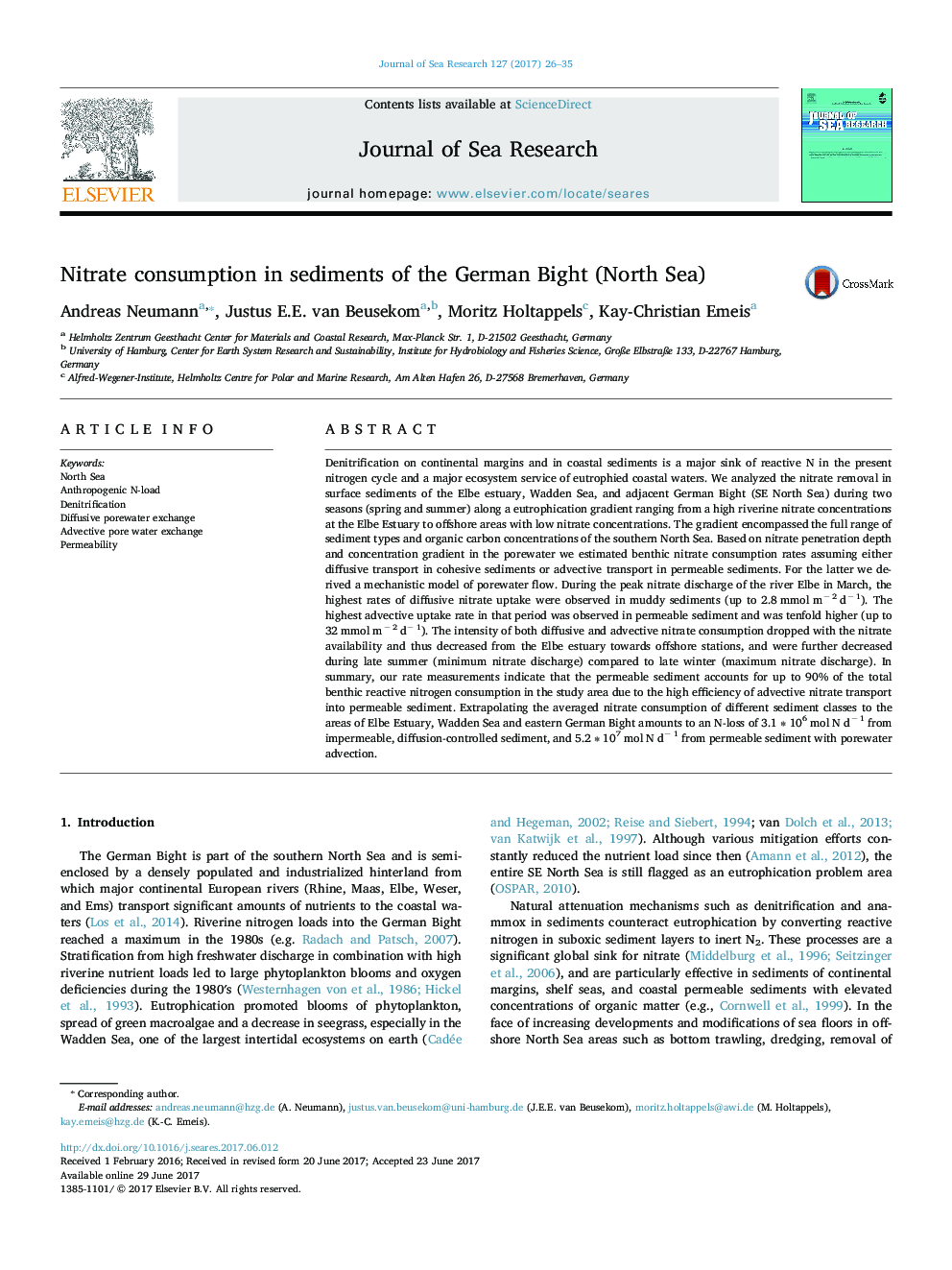| کد مقاله | کد نشریه | سال انتشار | مقاله انگلیسی | نسخه تمام متن |
|---|---|---|---|---|
| 5766090 | 1627448 | 2017 | 10 صفحه PDF | دانلود رایگان |
- Measurement of nitrate pore water profiles in sediment of German Bight (North Sea), Elbe estuary, and adjacent Wadden Sea.
- Fitting of diffusion-based and advection-based transport models by measured pore water profiles of nitrate concentration.
- Intensity of benthic nitrate consumption is mainly controlled by nitrate availability and sediment permeability.
- Porewater advection in permeable sediment fueled >Â 90% of the estimated total nitrate consumption in the study area.
Denitrification on continental margins and in coastal sediments is a major sink of reactive N in the present nitrogen cycle and a major ecosystem service of eutrophied coastal waters. We analyzed the nitrate removal in surface sediments of the Elbe estuary, Wadden Sea, and adjacent German Bight (SE North Sea) during two seasons (spring and summer) along a eutrophication gradient ranging from a high riverine nitrate concentrations at the Elbe Estuary to offshore areas with low nitrate concentrations. The gradient encompassed the full range of sediment types and organic carbon concentrations of the southern North Sea. Based on nitrate penetration depth and concentration gradient in the porewater we estimated benthic nitrate consumption rates assuming either diffusive transport in cohesive sediments or advective transport in permeable sediments. For the latter we derived a mechanistic model of porewater flow. During the peak nitrate discharge of the river Elbe in March, the highest rates of diffusive nitrate uptake were observed in muddy sediments (up to 2.8 mmol mâ 2 dâ 1). The highest advective uptake rate in that period was observed in permeable sediment and was tenfold higher (up to 32 mmol mâ 2 dâ 1). The intensity of both diffusive and advective nitrate consumption dropped with the nitrate availability and thus decreased from the Elbe estuary towards offshore stations, and were further decreased during late summer (minimum nitrate discharge) compared to late winter (maximum nitrate discharge). In summary, our rate measurements indicate that the permeable sediment accounts for up to 90% of the total benthic reactive nitrogen consumption in the study area due to the high efficiency of advective nitrate transport into permeable sediment. Extrapolating the averaged nitrate consumption of different sediment classes to the areas of Elbe Estuary, Wadden Sea and eastern German Bight amounts to an N-loss of 3.1 â 106 mol N dâ 1 from impermeable, diffusion-controlled sediment, and 5.2 â 107 mol N dâ 1 from permeable sediment with porewater advection.
Journal: Journal of Sea Research - Volume 127, September 2017, Pages 26-35
